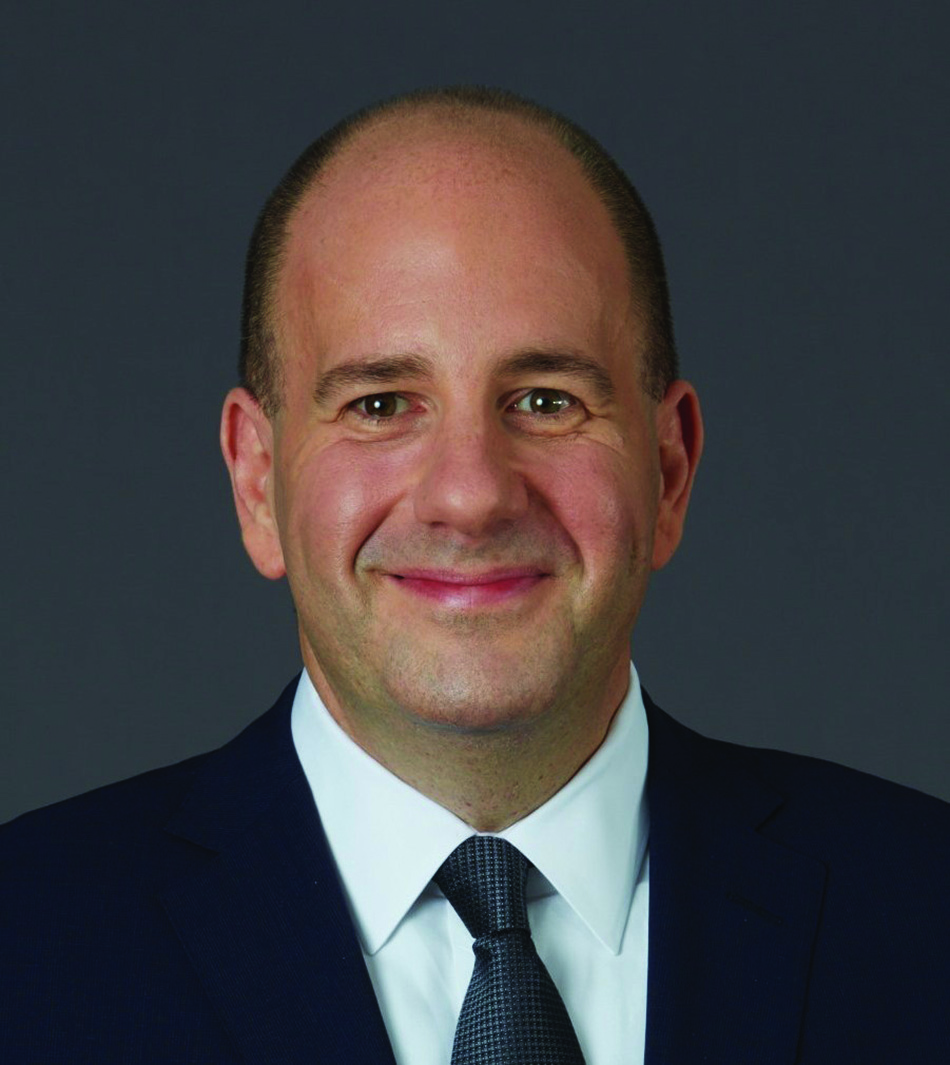2023 Predictions: Streaming Grows with Advertising and Measurement Follows
Attention, outcomes become key metrics

The television industry went through a wild ride in 2022. The bottom fell out in pay TV, the industry suffered shifted unbearable losses to streaming and ad-supported streaming picked up, but measurement issues slowed the flow of ad dollars.
All of this was topped off with inflation, supply-chain problems and a weak economy that forced media companies to tighten their belts, reduce staff and cut costs.
What's ahead in 2023? A number of prominent industry executives have bravely ventured their thoughts about the future. If nothing else, they provide food for thought as we close out the old year and get ready for the new one.
Also Read: 12 Television Business Execs To Watch As 2023 Unfolds
Streaming is expected to continue to grow next year, but consumers are looking to spend less money to watch TV while marketers are likely to put more of their ad dollars into streaming.
"Disney Plus will drive an international shift in streaming," Tal Chalozin, chief technology officer and co-founder at Innovid, said. "From Netflix to Amazon, the streaming industry has exploded yet again — and we will continue to see this expansion in 2023. Both Disney and Netflix are incentivizing a major transition in the global market from linear to streaming.
"Live sports are the future of streaming: Almost every streaming platform has a live sports offering," Chalozin added. "As we head into 2023, those offerings will continue to recruit subscribers and users to streaming."
Broadcasting & Cable Newsletter
The smarter way to stay on top of broadcasting and cable industry. Sign up below

“Not only will streaming viewership in live sports be at an all-time high in the new year, but the environment boasts a myriad of ways in which to engage viewers. Think of personalization and advanced formats like interactive creative. Not to mention measurement insights and the ability for optimization,” Chalozin said. “The opportunity for advertisers here is massive and savvy marketers will consider the streaming offerings available when developing live sports campaigns in 2023.”
“With more premium services entering the market, consumers are going to have to choose wisely where they spend their household budgets,” said Matt Spiegel, executive VP of the Media & Entertainment vertical at Transunion.
Spiegel pointed to a study that found that 31% of 2,612 Americans in March planned to cancel some subscription services this year. “It is likely they will gravitate towards mass market subscription streaming services as well as free ad-supported streaming, making niche players acquisition targets for both upstream and downstream services,” he said.
That could push midtier streaming services to consolidate, Spiegel added.
Field Garthwaite, CEO and co-founder of Iris.TV, said streaming will become a priority at the upfronts.
“TV networks’ streaming and digital video inventory have become centerpieces of upfront deals as networks are seeing an influx of new and streaming-first advertisers,” Garthwaite said. “We’re at a tipping point in the marketplace where this inventory is in high demand, there’s not infinite supply and the value is there in terms of targeting, engagement and measurement. Traditional TV continues to own the TV market, but streaming is becoming a bigger part of the overall TV business. And it will eventually become the biggest part. TV networks’ streaming and digital video inventory will continue to account for a bigger share of upfront commitments this year than in previous years.”
Cathy Oh, VP, global head of marketing and analytics at Samsung Ads, noted that free, ad-supported streaming television (FAST) offerings are on the rise. “It’s clear that consumers and platforms are embracing the value exchange between audiences and advertisers,” she said.
The Rise of Advertising
The rise of advertising on streaming services was underscored by Netflix and Disney Plus creating ad-supported versions of their previously noncommercial products.
“The launch of these ad-supported tiers will encourage advertisers to expand their streaming efforts in other markets, expediting that international transition overall,” said Innovid’s Chalozin.
"Netflix’s new advertising-based offering will help unstick a bunch of brands that have been ginger in their approach to streaming advertising and downright stubborn in their devotion to Linear TV. said Stefanos Metaxas, chief strategy officer at Bliss Point Media.
“We predict an ongoing exodus of linear dollars to streaming, but not much net-new spending because of the unpredictable economic factors going into 2023,” Metaxas said. “The situation is going to challenge traditional marketers to get more serious about their performance — which will in turn force them to (finally) shift some spend from linear to streaming.”
Netflix’s ad business appeared to get off to a slow start in 2022.

“The launch of Netflix's ad-supported tier was highly anticipated, but didn’t meet the high expectations of both users and the advertising industry,” Innovid’s Chalozin noted. “Like any organization, Netflix has limitations — from ad sales to subscriber numbers and in an economic environment where every dollar must be held accountable, advertisers aren’t too keen on testing new and pricey waters. That said, I expect this to be a more interesting element in 2023, as Netflix continues to develop the product.”
Hunter Terry, VP of solutions consulting and CTV commercial lead at Lotame, was more optimistic about Netflix’s ad business.
“Netflix will surprise everyone with ‘good advertising’ It’s got the people, pipes and partners to hit it out of the park,“ Terry said. “With AB InBev onboard, what could go wrong? Measurement won’t be a stumbling block either as TV hasn’t done a bang-up job of metrics and the open web is in disarray.
“Will consumers balk? Likely not. If they’ll get a break on price due to ads, that may be enough of a carrot to stay. With so much original inventory, Netflix has a real advantage and more runway in global users than newer platforms.”
Igor Oreper, chief architect at Bitmovin, said: “We will most likely see more streaming services follow Netflix and Disney Plus and provide a reduced cost, ad-supported subscription, particularly within the ongoing economic crisis. I’d also expect some streamers to go as far as offering a completely free service with advertising breaks.”
“As a result of the ongoing cost-of-living crisis, free ad-supported streaming TV services will continue to rise in popularity,“ he continued. “However, as with traditional linear channels continuing to lose viewers, I wouldn’t expect this to last through the year. Especially with the big ‘entertainers’ offering reduced subscription fees and investing in bespoke content to encourage viewers and offers.
“Over the next two to three years, I would expect to see some consolidation through M&A, and as we see an aggregation of offerings this will result in price increases for packages. At the end of the day, this will result in a smaller number of entertainment video-streaming providers standing tall,” Oreper said.
The Future of Measurement
With more viewing and ad dollars going to ad-supported streaming and connected TV, measurement will be a key issue in 2023.
Lotame’s Terry said that CTV is here to stay, but a measurement conundrum prevails.
“Amazed and confused are the prevailing sentiments around CTV,” Terry said. “There will not be a single solution, at least for the time being. The industry will become even more compartmentalized and disjointed, which will make measurement more difficult. We see it every week when a big streamer or OEM wants to set up its own offering accessible only via its platform. Case in point: Apple just announced they are creating their own DSP specifically to focus on their CTV offering.”
The focus of measurement will shift from reach to outcomes, said Jessica Hogue, GM of measurement and Analytics at Innovid.
“Yes, advertisers still care about reaching an unduplicated audience across TV platforms — staying top of mind among consumers, especially during times of economic uncertainty, will always be critical,“ Hogue said. “But with advertising dollars becoming increasingly scrutinized, ROAS must be visible and proven, which makes the shift to measuring not only for reach, but also for outcomes, all the more important. In 2023, advertisers will demand insight into the actual outcomes of their campaigns: ‘Did this streaming service help me increase a real-life commercial goal? How did my linear campaign directly impact app downloads? Which platforms are working for me and which are not?’ And they are right to ask these questions — the technology exists to answer them.”
Converged measurement — linear and digital together — will become critical.
“We’ll see a greater demand for this in the new year and savvy tech partners will be ready to support it,” Hogue said, adding that investment in measurement will spike.
“The topic of measurement has virtually become table stakes in advertising conversations across the board,“ she said. “This is largely because legacy players have failed to adapt to the market and deliver what advertisers and publishers need. As marketers continue to define their strategies amid an economic climate where every dollar counts, measurement has become an increasingly critical source of truth and performance. While challenges in measurement remain, so do opportunities — we’ll see further measurement-related investments in the coming year.”
What year will it be? Matt Sotebeer, chief strategy officer at Digital Remedy, said that 2023 will be the year of performance.

“Due to economic uncertainty as well as continued pressure on marketers to deliver and prove ROI, performance will continue to be key,“ Sotebeer said. “Performance doesn’t just mean direct response … even for brand advertisers, the ability to reach the right audiences on the right channels with high-impact capabilities will be essential. Media is going to have to work harder and advertisers will be looking for more capabilities around measurement and optimization and ROI generation.”
To David Cohen, CEO of the Interactive Advertising Bureau (IAB), it will be the year of attention.
“After 60-plus years of looking at reach, frequency, ratings points and incrementality, the game is changing,“ Cohen said. “Increasingly marketers and agencies are looking beyond the ‘opportunity to see’ and onto attention metrics, business outcomes, sales and sales surrogates. In the new year, attention will get the attention it deserves.”
Added Cohen: “While it’s clear that Nielsen alone will no longer be the sole video measurement currency, it’s still unclear which of the many multiple currencies will eventually become part of a widely embraced industry toolkit. Expect greater clarity to come in 2023 as the results of numerous tests come to light. We believe the industry will settle on two to three primary providers.”
Dan Slivjanovski, chief marketing officer of DoubleVerify, also sees attention metrics becoming more important in measuring TV.
“As economic uncertainty looms, we’ll see brands increasingly favor technologies which offer a stronger ROI,” Slivjanovski said. “But it’s not just macroeconomic circumstances causing this shift; with more and more advertising platforms opening up, advertisers not only need to fuel ROI, but will need to measure performance more accurately than ever before.
“As a result, attention metrics, from audibility to screen touches, will become a dominant advertising currency in 2023 — driving positive media and business outcomes,“ he said. “With this powerful data set, brands will be able to use attention metrics to predict the outcome of their ads, whether they’re looking to drive awareness or conversion. What’s more, they can use such data to optimize their campaigns.”
The rise of advanced television has been quicker than the industry ability to measure it, noted Elizabeth Herbst Brady, chief revenue officer for Yahoo.
“Growth for advanced TV was monumental in 2022, as was the continued proliferation and fragmentation of streaming services,“ she said. “The common denominator the industry is still looking for is measurement — across channels, devices and streaming services, as traditional measurement tools had been unable to account for this in a cohesive way.
“In 2023, the measurement challenge will be tackled with vigor, and features like ACR and set-top-box data will become more coveted. As with most makings of success, the key to thriving measurement solutions will be data,” Herbst Brady said.
“Better measurement will lead to better optimization, supporting the gold standard of 1) understanding and delivering the right ad frequencies between traditional linear and advanced TV tactics; 2) managing the rest of your digital campaigns against those frequencies in the right sequence; and 3) proving — through measurement — that ROI was achieved, and then optimizing for the next campaign,” she said.
“As CTV, linear addressable and programmer linear addressable gain traction, and television becomes more addressable overall, measurement, in turn, will advance as advertisers will be able to tie channels together in a more cohesive, data-driven way,” Herbst Brady said.
Cathy Oh of Samsung Ads expressed hope that a more complex industry can be tamed. “Walled gardens aren't going anywhere, but the way we will buy into them and measure campaign performance is set to evolve and become standardized,” she said. ■
Jon has been business editor of Broadcasting+Cable since 2010. He focuses on revenue-generating activities, including advertising and distribution, as well as executive intrigue and merger and acquisition activity. Just about any story is fair game, if a dollar sign can make its way into the article. Before B+C, Jon covered the industry for TVWeek, Cable World, Electronic Media, Advertising Age and The New York Post. A native New Yorker, Jon is hiding in plain sight in the suburbs of Chicago.
